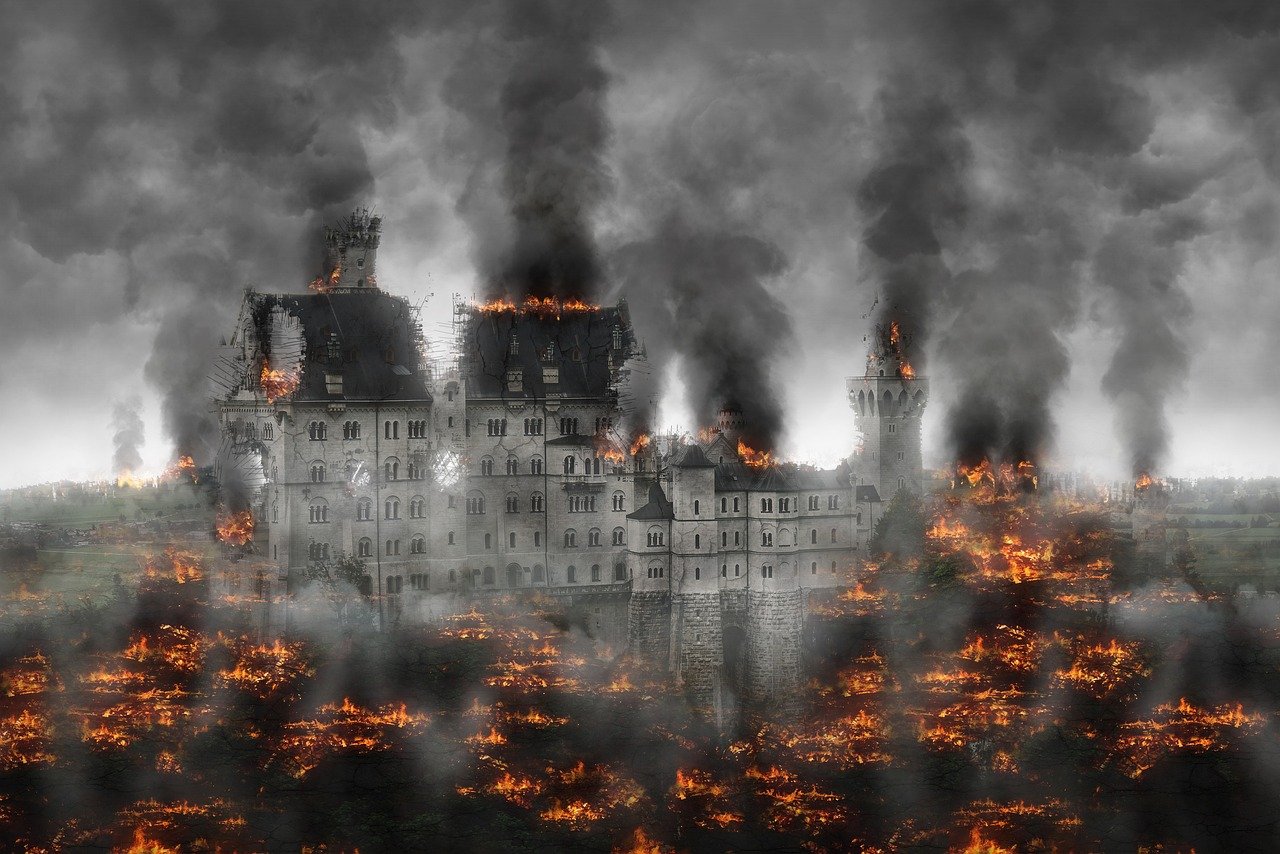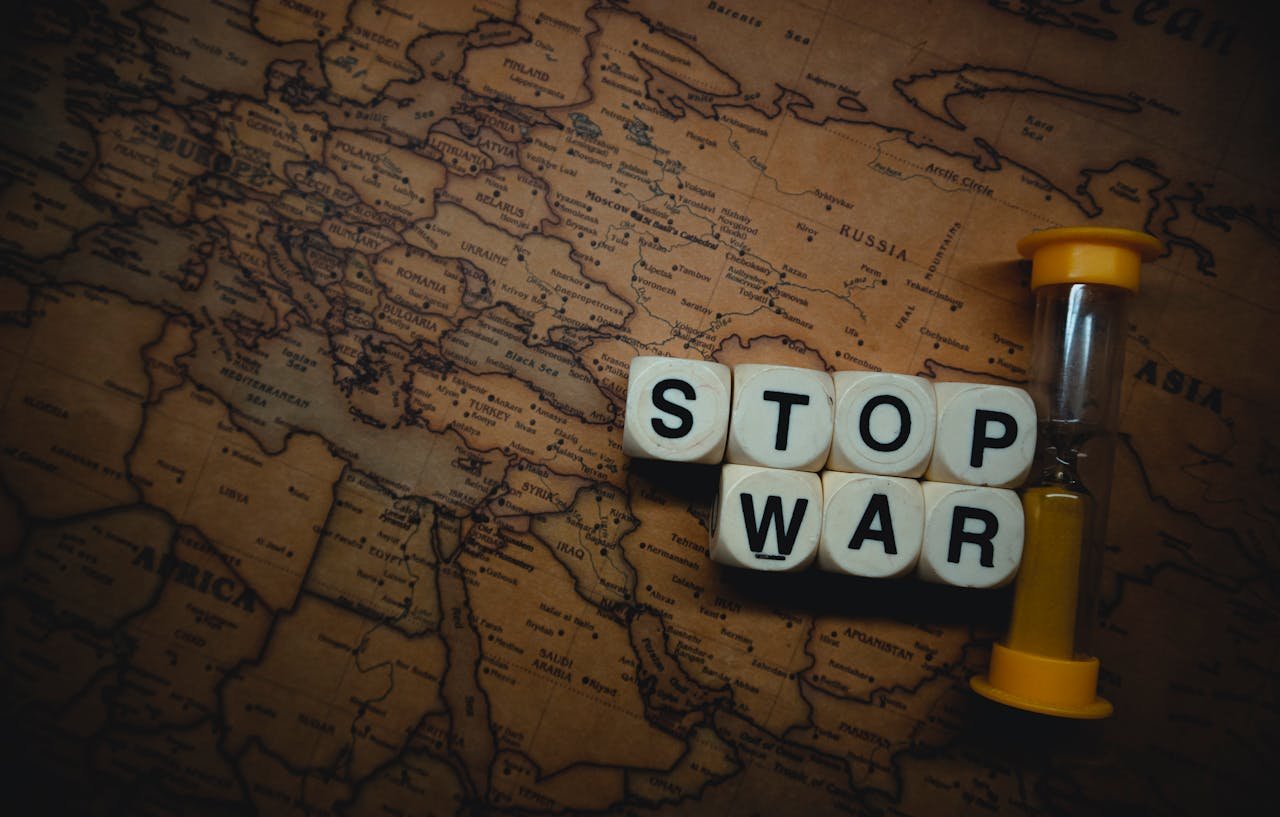Discover why first world war happened and unravel the causes behind this historic event on our blog. Explore more insights now.
Timeline and Facts of Why First World War Happened
The First World War, also known as the Great War, was a major global conflict that affected Europe and more from 1914 to 1918. It had lasting effects on many parts of the world. To understand why the First World War happened, we need to look at a mix of different reasons that built up tensions between European powers. This blog post, titled “Unraveling the Causes of Why First World War Happened,” will delve into the main events, ideas, and mistakes that led to this devastating war, including the assassination of Archduke Franz Ferdinand of Austria, which served as a catalyst for the start of World War I and the complex causes of the first world war.
The Prelude to Conflict
In the years before 1914, Europe was a place full of rising tensions. The great powers played a risky game. This was driven by their desire for empires, building up their military, and strong feelings of nationalism.
The balance of power, built through years of talks and agreements, was becoming weak. In this unstable atmosphere, a small event in a distant part of Europe would start the war.
Rival Empires and Nationalism
At the center of the troubles in Europe was a fight between empires. The German Empire was a newer player but was becoming more confident in its wish for power, particularly in its naval strength with the Imperial German Navy. It challenged the British Empire, which had been strong for a long time. The competition between them went beyond trade and included naval power, as Germany’s rising navy, including its powerful german ships, looked like a direct danger to Britain’s control of the sea. Additionally, the desire for an empire of their own drove Germany to unite smaller Germanic states and create a united Germany, or a new nation, further fueling tensions and rivalries between nations.
Things got worse with the crises in the Balkans, an area often called the “powder keg of Europe.” The Balkan Wars from 1912 to 1913 seemed to be about land disputes in southeast Europe, but they also showed deeper issues of national identity and ethnic problems.
After winning in these wars, Serbia became stronger and pushed for pan-Slavism, which meant bringing together all Slavic people under its rule. This move put Serbia at odds with Austria-Hungary, which saw Serbia’s growth as a threat to its diverse empire.
The Intricate Web of Alliances
Complicating things even more was the complex network of alliances that formed in the late 1800s and early 1900s. These alliances aimed to keep peace by providing mutual defense, but they ended up changing a local struggle into a larger war in Europe.
The Triple Alliance included Germany, Austria-Hungary, and Italy. This group was against an informal but strong alliance made up of France, Russia, and Great Britain.
These alliances may have made their members feel safe, but they also created a risky situation. An attack on one country could quickly turn into a war across the whole continent.
The Arms Race and Military Preparedness
Fueling the tensions was a serious arms race. Military spending increased a lot as the great powers tried to outdo each other in strength and new technology.
This arms race led to creating newer and deadlier weapons. These included strong artillery, machine guns that could take down many soldiers, and armored tanks that later changed trench warfare.
Ironically, these new tools, meant to stop conflict, made war even worse. They added to the massive destruction and suffering seen in the First World War.
The Spark in the Balkans
The tensions in Europe finally burst into war in the summer of 1914. This was sparked by an event in a small part of the Austro-Hungarian Empire called Sarajevo, which is in Bosnia.
In Sarajevo, a political act of violence changed everything. Archduke Franz Ferdinand, the heir to the Austro-Hungarian throne, was assassinated. This act set off a terrible chain of events that led to the war.
The Assassination of Archduke Franz Ferdinand
On June 28, 1914, Archduke Franz Ferdinand of Austria and his wife, Sophie, were killed in Sarajevo. Gavrilo Princip, a young Bosnian Serb nationalist, carried out this shocking act. Though it was surprising, tensions between Austria-Hungary and Serbia had been growing for a while.
Austria-Hungary wanted to control Serbian ambitions and show its power in the Balkans. They used the assassination as a reason to act. Austria-Hungary blamed the Serbian government, saying they created anti-Austrian feelings.
The assassination of Franz Ferdinand gave Austria-Hungary a chance to confront Serbia. They were ready to seize this chance and take action.
Escalation and Ultimatums
The Austro-Hungarian reaction to the assassination was quick and firm. With help from Germany, they sent an ultimatum to Serbia. This ultimatum had demands that were meant to be hard to accept.
The demands asked Serbia to stop supporting pan-Slavism, end anti-Austrian messaging, and let Austro-Hungarian officials join the investigation of the assassination in Serbia.
Serbia was stuck in a tough spot. They tried to satisfy Austria-Hungary while also asking for help from their ally, Russia. Still, the Austro-Hungarian ultimatum aimed to spark war, not to find a peaceful solution. Europe was now very close to a terrible conflict.
Serbia’s Role and Austro-Hungarian Reaction
Serbia knew it could not fight Austria-Hungary by itself. So, they asked Russia, their strong Slavic friend, for help. They also tried to buy time to work on a diplomatic solution.
At the same time, Great Britain saw how serious things were getting. They called for calm and wanted a peaceful way to solve the problem. But once military action started and countries sided with each other, it was hard to back away.
Austria-Hungary felt strong because of Germany’s support. They did not accept Serbia’s offer to compromise. On July 28, 1914, they declared war on Serbia. This action began a series of events that would pull all of Europe into conflict.
Wider European Involvement
When Austria-Hungary declared war on Serbia, the complex alliances in Europe sprang into action. What started as a small fight in the Balkans quickly grew into a larger war across Europe.
Russia, bound to protect its Slavic friends in Serbia, began to gather its large army. This led Germany to send a critical demand to St. Petersburg, asking them to stop their preparations for war.
Germany’s Blank Check Assurance
Germany, led by Kaiser Wilhelm II, gave Austria-Hungary a “blank check” for its actions against Serbia. This promise of full support made Austria-Hungary more aggressive, as they felt Germany would back them up.
However, the German leaders did not predict the serious results of their choice. They thought a small fight in the Balkans would stay small and did not see that their backing of Austria-Hungary would cause a bigger reaction.
Germany wanted to show its strength in Europe by supporting Austria-Hungary. This choice disrupted the balance of power and pushed Europe closer to a big war.
Russia Mobilizes Against Austria-Hungary
Russia felt it had to act because of its treaty and support for other Slavic nations. It could not overlook Austria-Hungary’s attacks on Serbia. The Tsar, Nicholas II, ordered a partial mobilization of Russian forces in the south. He hoped this would stop further actions from Austria-Hungary.
But this move was not enough. On July 30, 1914, Russia decided to fully mobilize its armed forces, including the Serbian army, in response to Austria-Hungary’s stubbornness and growing Serbian nationalism. This important choice, known as the Russian Revolution, was also fueled by strong feelings of unity among Slavic people and a desire for power. This decision was a key moment that led to war, specifically the German invasion of France.
The mobilization of Russia, which extended from Eastern Europe to the Pacific, greatly changed the balance of power. It put pressure on Germany to make its own decisions.
Germany Declares War on Russia and France
Germany knew it might have to fight two enemies: Russia in the east and France in the west. They felt the need to act fast. Their plan was to quickly defeat France and then focus all their power on Russia. This meant they decided to launch an early attack.
On August 1, 1914, Germany declared war on Russia. They said Russia’s mobilization was a threat to their safety. Two days later, Germany declared war on France, their neighbor and an important part of the Allied group.
When Germany invaded Belgium, a neutral country, it changed things. Germany had promised to respect Belgium’s neutrality. This action led Great Britain to join the war on the side of the Allies. The web of alliances turned a small fight in the Balkans into a huge world war.
The War Expands
As the big countries of Europe got ready for war, the fighting quickly moved beyond Europe. The Ottoman Empire joined the Central Powers because they wanted more power and were unhappy with the Allied Powers. This made the conflict bigger.
The world, which was linked by trade and talks, was now split because of the war.
The Schlieffen Plan and Belgium’s Neutrality
Central to Germany’s plan for war was the Schlieffen Plan. This strategy aimed to prevent fighting on two fronts. It involved quickly moving through neutral Belgium to avoid French defenses along the Franco-German border.
But breaking Belgium’s neutrality was a big mistake. It angered many people in Great Britain, which had promised to support Belgian independence.
When Britain joined the war, it changed the fight’s scope beyond just Europe. A small British Expeditionary Force was sent to help the French army. This force played an important role in stopping the German advance early in the war.
Britain Enters the War
On August 4, 1914, Great Britain decided to go to war with Germany. They did this because Germany had violated Belgium’s neutrality. This action turned a conflict in Europe into a worldwide war.
The British Empire had many resources and could call many soldiers and sailors from its colonies. The Royal Navy, which was the strongest naval force at that time, set up a blockade against Germany. This blockade hurt Germany’s economy and made it hard for them to get important supplies.
The choice to go to war was not easy for leaders in London. Some people wanted to stay neutral. But, the need to keep the balance of power in Europe and the duty to protect Belgium made them choose to fight.
The Ottoman Empire Joins the Central Powers
In a big change for the Middle East, the Ottoman Empire joined the war with the Central Powers in October 1914. This choice came from many reasons, like their anger toward the Allied Powers and their wish to get back lost land.
When the Ottomans joined the fight, it created a new battleground in the Caucasus. This also threatened British interests in Egypt and the important Suez Canal, which was crucial for the British Empire.
The Ottomans siding with Germany and Austria-Hungary shows how the First World War grew quickly. It turned from a conflict in Europe into a worldwide war, pulling in countries and empires far away from where it all began in Sarajevo.
Major Battles and Turning Points
The First World War saw many fierce and unclear battles spread across Europe. On the Western Front, both sides got stuck in a harsh situation, with soldiers digging deep trenches for hundreds of miles.
New weapons like machine guns, heavy artillery, and poison gas made the fighting terrible. These tools changed the battlefields and caused horrible losses, taking the lives of millions of soldiers from both sides.
The Western Front and Trench Warfare
The Western Front, where German troops crossed the border into Belgium on August 4, 1914, covered French land from the English Channel to the Swiss border. It became known for the terrible realities of trench warfare. Soldiers fought from static lines of trenches, which were shielded by barbed wire and guarded by machine guns. Any attack usually resulted in high costs and ended unsuccessfully.
Life in the trenches was tough. Soldiers faced constant bombing, the fear of snipers, and the mental strain of being close to death and destruction. The use of poison gas started with the Germans and later spread to the Allies. This brought a new level of horror to the fighting.
Even with bad conditions and heavy losses, both sides stayed locked in a deadly fight on the Western Front. Each side hoped that a breakthrough would lead to a clear victory.
Key Battles: Marne, Verdun, and Somme
The First Battle of the Marne happened in September 1914. It marked an important change in the war. A mix of French and British troops stopped the German push toward Paris. This shattered German dreams for a fast win in the west.
The Battle of Verdun took place over much of 1916. It showed how brutal the war was. The Germans wanted to weaken France and attacked a small fortress city. The French were determined to keep Verdun and faced huge losses, but they managed to drive back the German forces.
In July 1916, the British started the Battle of the Somme. They wanted to ease the pressure on Verdun and break through on the Western Front. Even with heavy bombardments and new tools like tanks, the Somme turned into a costly battle, leading to over a million losses for both sides.
The Eastern Front and Its Challenges
While the Western Front drew a lot of attention, the Eastern Front in Eastern Europe was also very harsh and important. Here, Russian soldiers fought against Austro-Hungarian troops and German units that were moved from the Western Front.
The Eastern Front was different. It had more movement and long distances. Big advances and retreats happened often, unlike the fixed trench warfare on the Western Front.
The size of the Eastern Front, along with supply issues and less industry, made it hard for both sides to gain a clear edge. Still, the Eastern Front had major effects on the war and the future of the Russian Empire.
The Role of Colonies and Overseas Territories
The First World War was a worldwide conflict. Its effects reached far beyond the battlefields in Europe. Colonies and lands overseas, once seen as places for raw materials and markets for goods, became part of the war effort. They supplied people and resources to help the countries at war.
This global mobilization showed how connected the world had become. It also changed the relationships between empires and their colonies for a long time.
Colonial Troops on European Fronts
Millions of soldiers from British India, French West Africa, and other colonies fought alongside their imperial leaders in Europe. They were driven by loyalty, a desire for adventure, and the hope of rewards. These colonial forces played an important role in the war, often paying a heavy price.
For instance, Indian troops were vital in helping British forces on the Western Front, especially in the war’s early years. Their bravery and sacrifice challenged the common beliefs about race within the British Empire.
Fighting for their colonial rulers changed how these soldiers thought. This experience often sparked nationalist feelings and a push for more freedom after the war.
Impact on Colonies: Resources and Recruitment
The First World War changed the colonies in many ways. It really affected their economies and societies. There was a huge need for raw materials and food. This led to more production of rubber, copper, and other important goods in colonies around the world.
The military needed more soldiers. Many men were taken from their villages, sometimes with pressure or promises of rewards, to fight for the British crown. This made it hard on the colony’s infrastructure and economies. It caused shortages, inflation, and unhappiness among the people.
All these experiences, along with talks about self-determination and new ideas, helped start future anti-colonial movements. These movements aimed to end the European empires.
Diplomacy and Propaganda
Diplomacy was often pushed aside during the war. However, it was important in guiding the events and final result of the First World War. Alliances changed. New players joined in to protect their own interests or help find peaceful solutions to the troubles.
Propaganda was often used to rally people and portray the enemy as evil. It played a key role in influencing people’s thoughts and keeping spirits high back home.
Shifting Alliances and Diplomatic Efforts
The First World War saw a lot of diplomatic activity. Countries tried to make their alliances stronger, hurt their enemies, or find a way to end the fighting. Italy joined the war with the Allies in 1915, and the United States, a country Britain had strong diplomatic ties with, got involved in 1917, ultimately leading to an escalation of the conflict into an armed conflict. This showed how alliances could change and how countries like Britain played a crucial role in diplomatic efforts, including the issue of home rule for Ireland.
There were attempts to find a peaceful ending to the war. Even though they did not work, they showed a wish for a deal and a rising awareness of the war’s terrible impact.
The complicated diplomatic relationships during the First World War show how important communication and negotiation are, even in the harsh conditions of war.
Propaganda’s Role in Mobilizing Populations
The First World War was a truly modern war. Governments understood the need to influence public opinion and get people involved in the fight.
They used propaganda at home through newspapers, posters, and films. This propaganda aimed to paint the enemy as monsters, celebrate national sacrifice, and keep people’s spirits high. Often, these campaigns shared exaggerated tales of enemy cruelty, called for patriotism, and silenced opposing views.
Propaganda was key to gaining support for the war effort. However, it also created a climate of fear, distrust, and intolerance in society during the war.
Technological Advancements and Warfare
The First World War changed the way wars were fought because of new technology. Weapons like machine guns, tanks, and airplanes changed the battles. This led to high levels of death and damage.
While these new tools could have led to fast wins, they also caused long-lasting fights. They made the war drag on instead of being over quickly.
Innovations in Military Technology
The First World War was a testing ground for new military tricks. Countries wanted to find ways to outdo their rivals. To do this, they created and used new technology.
Some important technologies from the war were:
- Machine Guns: They could shoot hundreds of bullets every minute. This changed how soldiers fought. Now, moving across open land became very costly.
- Tanks: The British first used tanks in 1916. They hoped tanks would end the stalemate in trench warfare. Yet, the early models often failed and were easy targets for artillery.
- Airplanes: At first, airplanes were just for spying. But they quickly became important in war, used for bombing, fighting in the air, and helping ground soldiers.
Chemical Warfare and Its Consequences
The use of chemical weapons, especially chlorine gas, began with the Germans at Ypres in 1915. This moment showed a worse side of war. Chemical weapons like mustard gas brought intense pain, blindness, and serious breathing issues.
These weapons were random in their attacks. They hurt both soldiers and innocent people, causing a lot of anger and calls for change. Still, they were used throughout the war. They became a clear sign of how brutal industrialized warfare can be.
The terrible effects of chemical weapons stayed with people long after. This led to worldwide moves to ban their use. In 1925, the Geneva Protocol was signed. This agreement stopped the use of chemical and biological weapons in wars and paid respect to the sad history of this time.
The Home Front: Societal Impact
The First World War was a total war. It affected people far beyond the battlefield. At home, societies faced big challenges due to the long conflict. They had to deal with rationing, not enough workers, and new social roles.
Women, who usually stayed at home, began to work in large numbers. They took jobs that men left behind to fight. This change forever shifted how society views gender roles and expectations.
Women’s Roles During the War
The First World War greatly changed the lives of women. It pushed against old ideas about gender roles and allowed women to be more involved in social and political areas.
With many men away fighting, women had to fill new jobs in factories, farms, and offices. They became essential for the war effort, both at home and in other countries. Women worked as nurses, ambulance drivers, and in munitions factories, showing their strength and defying what people thought about what women could do.
This involvement led to more job opportunities for women. It also gave them a feeling of control they hadn’t had before. Their hard work during the war helped boost the push for women’s rights to vote, which grew stronger after the war ended.
Economic Strains and Rationing
The First World War put a heavy strain on the economies of all the countries involved. Governments changed to a war economy. They redirected consumer goods to help with the war, causing shortages and higher prices.
Rationing food, fuel, and other basic needs became normal. This meant people had to adjust to living with less and making sacrifices.
The economic struggles during the war hit the working class and poor people the hardest. This made social tensions worse and showed the inequalities in society at that time. The experiences of rationing and struggle had a lasting effect on those who lived through the war. It changed their views on government, the economy, and social justice.
Towards the End: 1918 and Aftermath
By 1918, after many years of harsh fighting and great losses, the war started to shift in favor of the Allies. The United States joined the war in 1917, bringing in fresh troops and resources to aid the British Army on the Allied side. This, along with the outbreak of war and the fall of the Russian Empire due to the Bolshevik Revolution, gave the Allies a big boost in soldiers and supplies, ultimately leading to the end of the war and shaping British life in the aftermath.
In the summer and fall of 1918, the Allies launched several attacks. Fresh American troops led these efforts and weakened the German army. This resulted in a ceasefire and the start of talks for an armistice.
Key Offensives Leading to the End of the War
The last attacks in the First World War were done by the Allies in 1918. These attacks showed how harsh the war really was. The German army, tired after many years of fighting, could not fight back anymore against the strong numbers of the Allies.
Even though the Allies won, it came with a huge cost in lives. The battles in 1918, like the Meuse-Argonne Offensive, were some of the deadliest, taking hundreds of thousands of soldiers’ lives.
On November 11, 1918, after their allies fell and facing defeat, Germany agreed to the armistice. This brought an end to the fighting. The “war to end all wars,” as people sadly called it, was finally over.
Armistice and Peace Negotiations
The Paris Peace Conference started in January 1919. The leaders of the winning Allied powers met to talk about peace and change the borders in Europe. U.S. President Woodrow Wilson played a big role in this meeting. He pushed for the making of a League of Nations. This global group was meant to stop wars in the future.
In June 1919, the Treaty of Versailles was signed with Germany. This treaty was tough on Germany. It included losing land, giving up weapons, and paying heavy reparations.
The treaty aimed to keep peace, but it may have caused more problems later. Many people think the Treaty of Versailles was not a good peace deal. It shamed Germany and led to anger, which helped extreme ideas grow. This anger contributed to the start of World War II only twenty years later, making it important to understand the armistice and peace negotiations that followed.
Conclusion
In conclusion, the reasons for the First World War were based on a mix of rivalries, alliances, nationalism, and military growth. The killing of Archduke Franz Ferdinand was the trigger that started the conflict. This action led to a bigger fight that involved major powers in Europe. As the war grew, many big battles happened along with technological changes and effects on society. By learning about these historical events, we can understand the terrible results of poor political decisions and rising tensions. The First World War shows us the severe effects that can come from world rivalries and failed diplomacy.
Frequently Asked Questions
Why did the assassination of Archduke lead to a world war?
The killing of Archduke Franz Ferdinand of Austria served as a spark. It started the tensions in the Balkans that were already there. Along with many alliances in Europe, this turned a local fight into a worldwide fight, which is known as the First World War.
How did alliances affect the escalation of the war?
The complex agreements between countries formed strong groups that had to support each other. This quickly made the war worse. When Austria-Hungary declared war on Serbia, it involved the interests of their allies. As a result, countries across Europe began declaring war.









